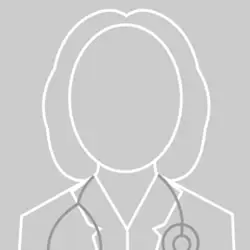Prostatic syndrome
"About 30% of patients do not respond effectively to medical treatment and surgery is performed".
DR. BERNARDINO MIÑANA LÓPEZ, M.D.
DIRECTOR - PERSON IN CHARGE. UROLOGY DEPARTMENT

What is prostatic syndrome?
Prostatic syndrome is the set of symptoms that appear as a consequence of an enlarged prostate. Benign prostatic hyperplasia (BPH) is the benign growth of the prostate gland in the male.
BPH is the clinical process that causes most of the urinary symptoms in the adult male. It is a process that correlates with the age of the patient.
Benign prostatic hyperplasia causes an obstruction at the level of the urethra, that is, at the level of the urinary tract. This obstruction determines an increasing difficulty to empty the urine that is stored in the urinary bladder.

What are the symptoms of prostate syndrome?
The symptoms that the patient may present are very varied. Generally, the patient notices an increase in the number of micturitions throughout the day, both during the day and at night.
They may also notice an increasing difficulty in initiating urination, the urine stream becomes thinner and less powerful, and urination may take place at various times.
Do you have any of these symptoms?
If you suspect that you have any of the above symptoms,
you should consult a medical specialist for a diagnosis.
What is the prognosis of prostate syndrome?
It is estimated that approximately 75% of men in their 80s will have some clinical manifestation of prostate enlargement. The likelihood of requiring surgical intervention is 29%.
Who can suffer from prostate syndrome?
It is a very common disease in men over 80 years of age.
How is prostate syndrome diagnosed?
The diagnosis of prostatic syndrome is made on the basis of the patient's clinical history together with a physical examination consisting of a digital rectal examination.
The diagnostic tests consist of an ultrasound scan to determine the size of the prostate and to check the volume of urine that remains in the bladder after urination, and a voiding test to assess the degree of obstruction in the urinary tract.
The study is complemented with a general and specific analysis (PSA determination).
How is prostatic syndrome treated?
The medical treatment can be done with various pharmaceutical products. These include products obtained from plants (phytotherapy), products that act on the innervation of the prostate gland (alpha-blockers) and drugs that block the enzymatic mechanisms that control the growth of the prostate gland (5-Alpha-reductase inhibitors).
When medical treatment is not effective or the clinical impact is important, surgical treatment is considered which can be conventional open surgery, simple prostatectomy, or by means of endoscopic surgery in which the patient is operated on through the urine duct, with a transurethral resection of the prostate.
In order to improve the results obtained with transurethral resection, research has been carried out over the last 20 years using different energies, especially with KTP lasers. The benefits sought are: less bleeding, shorter hospital stay with the same effectiveness.
Where do we treat it?
IN NAVARRA AND MADRID
The Department of Urology
of the Clínica Universidad de Navarra
The Department of Urology of the University of Navarra Clinic offers the patient a medical team, composed of first-rate professionals, and state-of-the-art diagnostic and therapeutic means such as the Da Vinci® robotic surgery.
The Department of Urology possesses the certificate of accreditation of the European Board of Urology, a reinforcement of the excellence of the service at the level of care, teaching and research, which in Spain only three hospital centers possess.
Diseases we treat:
- Prostate Cancer
- Kidney Cancer
- Bladder Cancer
- Testicular Cancer
- Benign prostatic hyperplasia
- Urinary Incontinence
- Renal Lithiasis
- Genitourinary Prolapses
- Pediatric Urology

Why at the Clinica?
- A team of top-level professionals trained in international centers.
- State-of-the-art technology for diagnosis and treatment.
- In 24-48 hours you can start the most appropriate treatment.














